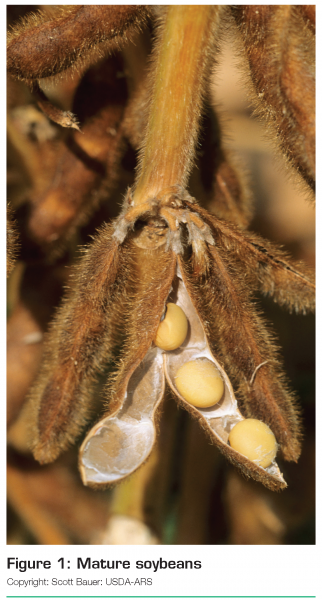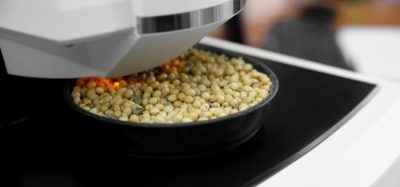Assessing the safety of genetically modified crops used for food and feed purposes
- Like
- Digg
- Del
- Tumblr
- VKontakte
- Buffer
- Love This
- Odnoklassniki
- Meneame
- Blogger
- Amazon
- Yahoo Mail
- Gmail
- AOL
- Newsvine
- HackerNews
- Evernote
- MySpace
- Mail.ru
- Viadeo
- Line
- Comments
- Yummly
- SMS
- Viber
- Telegram
- Subscribe
- Skype
- Facebook Messenger
- Kakao
- LiveJournal
- Yammer
- Edgar
- Fintel
- Mix
- Instapaper
- Copy Link
Posted: 20 February 2009 | Gijs A. Kleter, RIKILT – Institute of Food Safety, Wageningen University and Research Center | No comments yet
In the mid-nineties, genetically modified crops (GM) that had been obtained through recombinant DNA technology were grown commercially at a large scale for the first time. The agricultural area that is covered with these crops has since then grown steadily, reaching 114 million hectares globally in 20072. GM crops and the foods and animal feed that are derived from them commonly have to be approved for marketing, for which they also have to undergo a safety assessment.
In the mid-nineties, genetically modified crops (GM) that had been obtained through recombinant DNA technology were grown commercially at a large scale for the first time. The agricultural area that is covered with these crops has since then grown steadily, reaching 114 million hectares globally in 20072. GM crops and the foods and animal feed that are derived from them commonly have to be approved for marketing, for which they also have to undergo a safety assessment.
In the mid-nineties, genetically modified crops (GM) that had been obtained through recombinant DNA technology were grown commercially at a large scale for the first time. The agricultural area that is covered with these crops has since then grown steadily, reaching 114 million hectares globally in 20072. GM crops and the foods and animal feed that are derived from them commonly have to be approved for marketing, for which they also have to undergo a safety assessment.
In order to get marketing approval for a GM crop, an application has to be submitted to the authorities with a dossier that includes data on its safety. The principles for safety assessment have been globally harmonised because of efforts made by various international organisations.
GM crops are grown in an expanding number of nations, such as the United States, Canada, Argentina, Paraguay, Brazil, China, India and South Africa. Most of these crops are commodity crops, including canola, cotton, maize and soybean2 (Figure 1 on page 54). Their derived products may be present in food and feed marketed elsewhere, though, given the global trade in food and feed commodities.
The two main traits that have been introduced into GM crops through genetic modification are resistance to herbicides, which are weed-killing substances, and resistance to insects2. Herbicide resistance allows for spraying herbicides over the top of growing crop plants, which would otherwise suffer damage from these sprays. The herbicide resistance trait can therefore facilitate the management of weeds. Herbicide resistance can be achieved through two different strategies. If the herbicide targets an intrinsic enzyme, introducing an insensitive version of the target enzyme can render the crop resistant. Another strategy is to introduce an enzyme that inactivates the herbicide by chemically modifying it.
Another main trait that has been introduced into GM crops is insect resistance. In most cases, resistance to insects has been achieved by introducing Cry proteins from the soil bacterium Bacillus thuringiensis into these crops. Cry proteins naturally occur in crystal-like inclusions within cells of B. thuringiensis. Preparations of B. thuringiensis itself are also used as biological pesticides, for example in organic agriculture. The proteins of B. thuringiensis that have been used for crop modification are toxic to specific insect species but not to humans or domestic animals.
An internationally harmonised approach
Before the first commercial introduction of GM crops, international organisations such as the Organization for Economic Cooperation and Development (OECD), Food and Agriculture Organization (FAO), and World Health Organization (WHO), had already been pursuing international consensus on the approach towards the safety assessment of these crops. These activities have resulted in the globally harmonised approach of ‘comparative safety assessment,’ which has eventually become enshrined into the guidelines for the safety assessment of foods derived from GM plants and micro-organisms that were published by FAO/WHO Codex alimentarius in 2003 (WHO, 2009)9.
Underlying this comparative approach is the insight that foods are complex mixtures of compounds, each with either positive or negative effects. Whilst most of the conventional foods have not been tested for their safety, they do have a record of safe consumption based on experience. The comparative approach therefore focuses on the differences between a GM food and a conventional counterpart with a history of safe use in order to verify if the first is “substantially equivalent” to the latter.
This comparison between a GM and conventional product entails an analysis of many parameters, including the composition in terms of macronutrients, micronutrients such as vitamins and minerals, fatty acid and amino acid composition, anti-nutrients and natural toxins. In addition, details of the molecular characteristics of the genetic modification, such as new proteins produced from the introduced genes, will be taken into account. If the GM organism is a crop, the comparative analysis usually also includes an analysis of its phenotypic and agronomic traits. Based on the differences identified in this extensive analysis, it can be decided if further testing will be needed to assess the safety of the GM product. The comparison therefore serves as a starting point of the safety assessment. The comparative approach has been reviewed in more detail by Kok and co-workers6.
Commonly addressed issues
A number of issues are commonly addressed with regard to the safety of a GM crop and derived food and feed products. These issues include the molecular characterisation of the GM crop, the comparative analysis of its compositional, phenotypic and agronomic characteristics, the occurrence of unintended effects, potential toxicity, potential allergenicity, horizontal gene transfer, nutritional value and safety of pesticide residues. Below, these issues will be considered in more detail. A comprehensive overview of these issues is provided by reviews elsewhere3,6 and guidance documents1,9.
Molecular characterisation
The data on molecular characteristics commonly comprise a description of the method that has been used for genetic modification as well as a description of the alterations in the genetic material of the host crop that has been modified, including a detailed analysis of the place of insertion of the genetic construct into the host genome, in addition to the biochemical and other characteristics of the new gene products.
Comparative analysis
As mentioned above, a comparison of the GM crop and its conventional counterpart is commonly undertaken, including an extensive analysis of their compositional, phenotypic and agronomic characteristics. The OECD has published consensus documents with information on the compositional analysis of an expanding list of crops, including barley, beet, canola, cotton, forage legumes, maize, potato, rice, soybean, sunflower, tomato and wheat7.
The results of this comparison help identifying changes caused by genetic modification that may or may not require further assessment of their safety. Changes per se do not pose safety concerns, though. An important factor to be considered is the background variation of the parameter showing a change, which may reflect the range in conventional foods to which consumers are exposed. Useful information on the background ranges of compositional parameters can be obtained from the International Life Sciences Institute’s Crop Composition Database (www.cropcomposition.org).
Unintended effects
It can be envisaged that besides the intended effects of a genetic modification, unintended effects may occur, for example if the insertion of foreign DNA occurs at the site of an intrinsic gene of the host crop, which may disrupt the function of the intrinsic gene. Unintended effects can be identified during the comparative analysis. In addition, data on the molecular characteristics can provide indications of potential unintended effects.
Potential toxicity
The toxicity of specific newly introduced or altered constituents of the GM crop, including newly expressed proteins, will have to be considered. For new proteins, this commonly entails a pepsin resistance test, in which the protein is incubated in vitro in an acidic solution containing the protein-degrading enzyme pepsin. The underlying idea is that if a protein is sensitive towards the action of pepsin, it may be less likely to sustain digestion and become available for uptake from the gastrointestinal tract. Another method commonly employed is the bioinformatics-supported comparison of the amino acid sequence of a new protein with the sequences of known toxic proteins, using specific computer algorithms to align these sequences and checking for relevant similarities. In addition, animal testing with the specific protein or other specific constituents may be needed if there are insufficient data on the absence of – or indications for – their toxicity.
It may also be decided to carry out toxicological studies with the whole GM product, for example if the GM product has been extensively changed, but this is not standard practice. Whole-product toxicity testing in animals does have its limitations, though, including a limited dose range due to factors such as nutritional balance, bulkiness and palatability.
Potential allergenicity
Allergies are adverse hyper-sensitive immune reactions, including reactions to food constituents designated as ‘food allergies.’ Allergens are substances that are able to elicit allergic reactions. All known food allergens are proteins, constituting a minor fraction of all proteins in general. The potential allergenicity of a newly introduced protein is therefore an important issue considered during the safety assessment. Because no single assay can be completely predictive, a ‘weight-of-evidence’ approach is followed, combining data and results of various tests in order to arrive at a conclusion on the likelihood of allergenicity of the new protein. Similar to toxicity testing, this approach also entails a pepsin resistance test and a bioinformatics-supported comparison of the sequence of the new protein with sequences of known allergens. In addition, the history of allergenicity of the source of the foreign gene encoding the new protein is considered. If any indication for potential cross-reactivity with a known allergen is thus found, further testing may include a binding assay with sera from patients allergic to this allergen.
If the host crop is also known to be allergenic itself, then potential changes in the intrinsic allergenicity of the GM crop compared to the conventional counterpart may have to be checked.
Horizontal gene transfer
The issue of horizontal gene transfer refers to a natural kind of genetic modification, through which DNA from one organism can be transferred to a non-related organism, in which the genetic material is incorporated and, stably maintained. The assessment of horizontal gene transfer from GM crops mainly focuses on one kind of foreign genes, the antibiotic resistance marker genes, and the likelihood that these genes may be transferred to pathogens, rendering them insensitive towards the pertinent antibiotics. These marker genes have been used in the development of a number of GM crops in the laboratory because they facilitate the selection of successfully modified plants, yet they do not serve a function in the final product. Whilst the potential transfer of antibiotic resistance genes from plants to bacteria has been studied intensively, no spontaneous transfer has been observed so far, indicating a very low likelihood, if at all, of such a transfer. Other considerations include the prevalence of the same resistance in the natural background and the clinical importance of the pertinent antibiotic. The marker genes present in commercial GM crops, in particular kanamycin resistance, do not raise safety concerns.
Nutritional value
Some of the GM crops on the market or in an advanced stage of development have modified nutritional properties. An example is maize producing elevated levels of the essential amino acid lysine for animal feeding. Besides these intended modifications, also unintended changes to the nutritional properties can be identified through the comparative compositional analysis of a GM crop. If needed, these compositional analyses can be further extended with feeding trials in target animals. A well-known animal model for this purpose is the fast-growing broiler chicken, which reaches full size within six weeks.
Pesticide residues
As mentioned above, certain herbicides can be applied over the top of herbicide-resistant GM crops. It can be envisaged that this practice can lead to altered levels of herbicide residues in the GM crop compared to conventional crops, as well as to changes in profiles of herbicide metabolites. These issues are commonly assessed separately, for the specific herbicide – GM-crop combination under pesticide regulations.
Conclusions
Whilst regulations on GM crops and derived foods and feeds may differ among legislations, the approach towards their safety assessment has been internationally harmonised, as summarised above. Besides safety, also other issues, such as labelling and traceability, may have to be addressed. Also for this purpose, the harmonisation of advanced and validated GMO detection methods, as well as reference materials, would be desirable8. Mutual recognition by nations of each other’s safety assessments and detection methods, as facilitated by international harmonisation, could help preventing disruptions of trade of food commodities. For example, the European Union Rapid Alert System for Food and Feed shows recent peaks in the notifications for the presence of unauthorised GM crops in imported products5. Another development is that of the expected commercialisation of GM animals in the near future, for which the safety assessment can be done following the same approach as for GM crops, albeit with different emphasis on various subtopics4.
Acknowledgement
Financial support by the Ministry of Agriculture, Nature and Food Quality is gratefully acknowledged. The author also thanks Dr E.J. Kok for her comments to the manuscript.


Figure 1
References
- EFSA (2008) Guidance document for the risk assessment of genetically modified plants and derived food and feed by the Scientific Panel on Genetically Modified Organisms (GMO) – including draft document updated in 2008. European Food Safety Authority, Parma. http://www.efsa.europa.eu/ EFSA/efsa_locale-1178620753812_ 1178620775747.htm
- James, C. (2007) ISAAA Brief 37-2007: Executive Summary. Global Status of Commercialized Biotech/GM Crops: 2007. International Service for the Acquisition of Agri-Biotech Applications, Ithaca NY. http://www.isaaa.org/resources/publications/briefs/37/executivesummary/default.html
- Kleter, G.A. and Kuiper, H.A. (2002a) GM crops – is there a food safety issue? Pesticide Outlook 13(1), 25-30. 10.1039/b200944g http://www.rsc.org/publishing/journals/PO/article.asp?doi=b200944g
- Kleter, G.A. and Kuiper, H.A. (2002b) Considerations for the assessment of the safety of genetically modified animals used for human food or animal feed. Livestock Production Science 74, 275-285. doi:10.1016/S0301-6226(02)00019-2
- Kleter, G.A., Prandini, A., Filippi, L., Marvin, H.J.P. (in press) Identification of potentially emerging food safety issues by analysis of reports published by the European Community’s Rapid Alert System for Food and Feed (RASFF) during a four-year period. Food and Chemical Toxicology, in press. doi:10.1016/j.fct.2007.12.022
- Kok, E.J., Keijer, J., Kleter, G.A. and Kuiper, H.A. (2008) Comparative safety assessment of plant-derived foods. Regulatory Toxicology and Pharmacology 50, 98-113. doi:10.1016/j.yrtph.2007.09.007
- OECD (2009) Consensus Documents for the work on the Safety of Novel Foods and Feeds. Organization for Economic Cooperation and Development, Paris. http://www.oecd.org/document/9/0,3343,en_2649_34391_1812041_1_1_1_1,00.html
- Querci, M., Broll, H. and Van Den Eede, G. (2008) GMO analysis: towards global harmonisation. New Food (2), 51-54.
- WHO (2009) Codex Work on Foods Derived from Biotechnology. World Health Organization, Geneva. http://www.who.int/foodsafety/biotech/codex_taskforce/en/index.html









